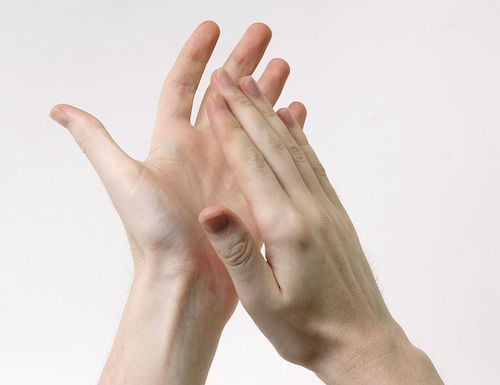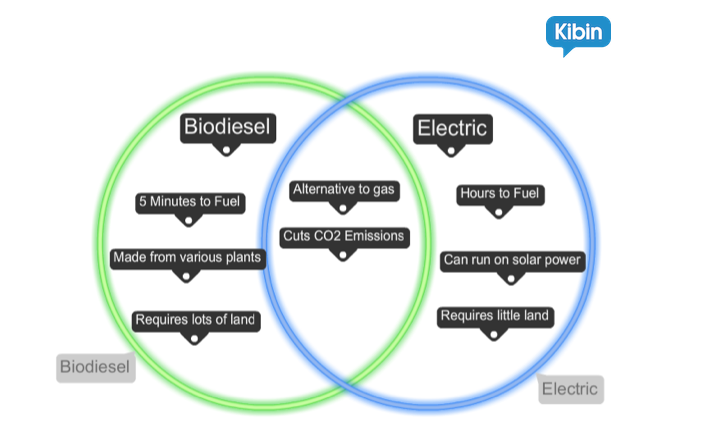Erin H. has been one of Kibin’s favorite editors since August 2013. I had a chance to ask her for her best compare and contrast essay tips. Here’s what she had to say.
In Simple Terms, What Is a Compare and Contrast Essay?
A compare and contrast essay, at its heart, describes how two things are similar and how they are different to make a larger point about one or both of the subjects of comparison.
We humans love to compare things. We read articles comparing technical specifications to help us decide between an Apple phone and an Android one. We compare the stances of political candidates to help us make sound voting decisions. We also compare seemingly unrelated things, people, or ideas — like literary characters or the genomes of spiders and humans — to deepen our understanding of those subjects or to see them in a new light.
And sometimes, like New York Times contributor Eric Spitznagel, we do it for a laugh.
Compare and Contrast Essay Tips: What Makes a Good Essay?
A great compare and contrast essay paints its subjects in a fresh light, telling the readers something they didn’t already know or had never considered before. There is nothing better than a delightful juxtaposition of two things that seem like polar opposites; this writer once wrote compare and contrast essays about nuns and prostitutes and Walt Disney and Hugh Hefner!
That said, a good compare and contrast essay doesn’t have to be shocking to be interesting and engaging. Great compare and contrast essays might help readers make a decision, facilitate a new understanding of two subjects, or nominate a “winner” between two subjects — but at their heart, the best essays of this genre always say something fresh and are driven by a clear purpose.
Compare and Contrast Essay Tips: What Makes a Bad Essay?
A bad compare and contrast essay has no clear purpose — that is, it describes the similarities and differences without making a larger point about the subjects being compared and contrasted. In fact, I often see writers fall into the “easy thesis” trap with these essays. Say we’re comparing electric vehicles and biodiesel vehicles. Writing the thesis is easy, right?
 Electric vehicles and biodiesel vehicles share many similarities, but they also have several differences.
Electric vehicles and biodiesel vehicles share many similarities, but they also have several differences.
 While electric vehicles and biodiesel vehicles seem to be very different, they are actually quite similar in some ways.
While electric vehicles and biodiesel vehicles seem to be very different, they are actually quite similar in some ways.
BOOM. Easy. Dust those hands off. You’re done, right? Nope.

Each states that the two subjects are both alike and different, but….so what? Why does it matter? Without making any meaningful statement about the significance of their similarities and differences, why write the essay at all? You could literally copy and paste any two subjects into those thesis statements, which ultimately means they are way too bland.
A better thesis says why those similarities and differences matter. Maintaining the electric vs. biodiesel vehicles theme, let’s look at some better thesis examples:
 While biodiesel and electric vehicles use radically different energy sources to operate, they both offer a viable alternative to fossil-fuel-guzzling vehicles that dominate the auto market.
While biodiesel and electric vehicles use radically different energy sources to operate, they both offer a viable alternative to fossil-fuel-guzzling vehicles that dominate the auto market.
 Biodiesel and electric vehicles both offer environmental benefits compared to cars that run on gasoline, but their differences in consumer appeal and ease of refueling makes it unclear which will dominate the market in the coming decades.
Biodiesel and electric vehicles both offer environmental benefits compared to cars that run on gasoline, but their differences in consumer appeal and ease of refueling makes it unclear which will dominate the market in the coming decades.
 While biodiesel and electric vehicles are similar in terms of their environmental benefits and costs, the ease of refueling biodiesel cars compared to recharging electric cars makes biodiesel king in the battle between greener automobiles.
While biodiesel and electric vehicles are similar in terms of their environmental benefits and costs, the ease of refueling biodiesel cars compared to recharging electric cars makes biodiesel king in the battle between greener automobiles.
These thesis statements approach the topic in three different ways:
1.) By arguing that both are equally viable
2.) By highlighting their differences and the uncertainty of the future market
3.) By picking a “winner” between the two topics
However, they all make an argument that you will support through comparing and contrasting the two subjects in the essay.
What Are 3 Simple Compare and Contrast Essay Tips?
1. Determine whether you should compare, contrast, or both.
Pay careful attention to writing prompts and instructions for compare and contrast essays. Some essays require you to compare and contrast your subjects, while other assignments instruct you to compare or contrast. Other times, comparing and contrasting two or more subjects is merely a portion of a larger essay assignment.
2. Identify MEANINGFUL points of comparison.
When comparing and contrasting two subjects, it’s important to focus on meaningful points of comparison (and contrast).
For instance, if your instructor asks you to compare and contrast two books you read in a literature class, noting that both books were published in Times New Roman font is probably not a meaningful point of comparison. Comparing and contrasting the characters, plots, settings, literary devices, and other literary elements is a much more sound strategy.
Graphic organizers lend themselves well to organizing points of comparison and contrast during the brainstorming phase.
The good old Venn diagram is a simple way of organizing your ideas. Simply grab a blank sheet of paper, and draw two large circles that overlap in the middle. Label one of the circles for your first subject, one of the circles for the second subject. Points of contrast, or differences, go in the main section of the circles. When you identify something that the subjects have in common, you list it in the middle, where the circles overlap. If you prefer a digital approach, try this handy Venn diagram generator.
A compare/contrast chart is another great way to list and organize your ideas. Check out this example that compares the Harry Potter and Lord of the Rings series.
3. Pick a sound organizational strategy.
There are two primary ways to organize a compare and contrast essay.
The first is the block structure, in which you describe the qualities of one subject in one body paragraph and the qualities of the second subject in another body paragraph.
The second organizational strategy is the point-by-point comparison, in which each body paragraph focuses on a similarity or difference and includes discussion of both subjects. Check out these helpful outlines and tips for helping you choose the best organizational strategy for your topic and argument as well as short examples of essays organized using each strategy.
What Is Your Biggest Writing Pet Peeve?
One of my biggest peeves as an editor is a lack of transitions in writing. Transitions are the glue that holds an essay together. Transitions make all the difference between an essay that flows logically and one that seems disjointed and awkward, even if the core ideas are the same. Transitions are essential in compare and contrast essays. There are entire sets of transitions designed especially for comparing and contrasting. Use transitions well. Your readers will be grateful for the signposts that guide them through your writing.
Oops, something’s missing. Let’s try that again, now with more transitions:
One of my biggest peeves is a lack of transitions in writing. As our own Naomi points out, transitions are the glue that hold an essay together, and they can make all the difference between an essay that flows logically and one that seems disjointed and awkward, even if the core ideas are the same. For this reason, transitions are essential in compare and contrast essays, and in fact, there are entire sets of transitions designed especially for comparing and contrasting. If you use them well, your readers will be grateful for the signposts that guide them through your writing.
About Erin H.
 Erin H. has been wowing Kibin customers since her first edit in August 2013. She lives in Indiana with her husband and daughter.
Erin H. has been wowing Kibin customers since her first edit in August 2013. She lives in Indiana with her husband and daughter.
Favorite season: Fall
Favorite movie: Pulp Fiction
Favorite color: Teal
Favorite beverage: Coffee

